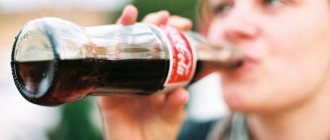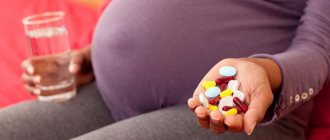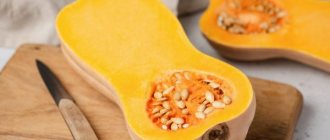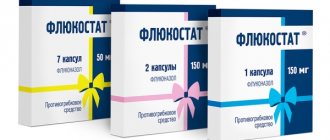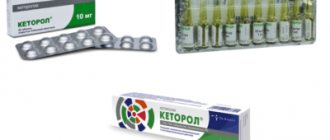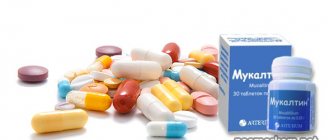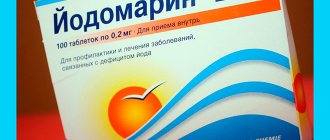While waiting for the baby to appear, you, of course, understood what it is like for expectant mothers when, on the one hand, there are many prohibitions on eating certain foods, and on the other, an irresistible craving for your favorite food and drinks appears and even a desire to try something arises. that's new.
Since pregnant women are not recommended to drink a lot of tea and coffee, they have to look for an alternative, and the question arises - can you eat hibiscus during pregnancy? Let's figure out what this tea is and how to use it correctly.
Hibiscus (hibiscus) - an ancient and valuable plant
This flower is nothing more than a special type of mallow - a well-known plant, but this subspecies does not grow here, and therefore the tradition of brewing hibiscus is foreign and a little exotic for us.
This drink became popular in our country relatively recently, some 10-15 years ago, and even now there are few of its fans, because our people really love black tea and treat it as their only table drink.
Meanwhile, in the East, in particular in Arab countries, the Mediterranean, South America and the islands of the Indian Ocean, drinks are prepared from various plants, one of which is the beautiful, fragrant and tasty hibiscus, also known as hibiscus or Sudanese rose. The culture of its use has been around for many centuries, and its taste does not become boring and does not disappear from the menu of drinks of different nations.
Reviews from pregnant women about hibiscus
You can learn about hibiscus tea not only from reference books, but also on forums. Here's what expectant mothers write about him:
Victoria: I was tormented by nausea. A lot of days. Morning, afternoon and evening. At night I sit on the toilet. I've lost weight and don't eat anything. My gynecologist recommended pills, but I refused. I won’t poison my own baby. Then my mother remembered that she drank hibiscus in her youth. I bought it and tried it. The tea tastes sour, it’s not unpleasant to drink, you can do it without sugar. Yes, I can’t handle sugar. I started drinking in small portions. As soon as I feel like I’m going to throw up, I’ll grab a cup of tea. Two or three sips. It seems to be passing. I even started eating a little. Of course, I feel nauseous, but not so often anymore. I still drink hibiscus. There is almost no toxicosis, but I didn’t give up tea either, because I read that it contains a lot of useful substances. Try it, maybe it will help you.
Nadezhda: Hello, I read stories about hibiscus and also decided to share my story. I am already a nursing mother. I have been drinking this tea since childhood - my mother taught me to drink it. I have never had an allergy to it, so I decided to continue drinking it even while feeding. But the experience was not very positive: my son developed a rash on his tummy and cheeks. I thought for a long time about what product such a reaction could have occurred to, and then I realized - red tea. He's red! I first had to remove it from my diet altogether, and then I started drinking 2-3 sips. The baby has no reaction. I think I’ll soon introduce him to his favorite tea. I appreciate it because it is good without sugar and does not allow me to gain weight. I recommend.
Hibiscus tea will be beneficial for pregnant women only if the rules for its use are followed. But before drinking it, you need to consult a doctor so as not to harm either yourself or your baby.
How to choose a good hibiscus
The process of growing and collecting this plant is simple, but responsible.
- Flowers are collected from it;
- They are dried without grinding or drying, unlike black tea.
Moreover, the quality of drying is of great importance, because if you remove too much moisture from the flowers, they will begin to crumble into dust - such hibiscus is considered to be of low quality and goes mainly into blends of flower teas, where the grinding of the components is not so noticeable.
- If you want to benefit from the drink, choose a high-quality product in transparent packaging so that large, intact flowers are visible, which can impart the maximum amount of vitamins and minerals to the decoction.
- By the way, the taste of the finished drink will also be different - high-quality raw materials are more aromatic and give a rich red color to the infusion, for which many people love and appreciate it.
Potential harm and contraindications
Hibiscus has a strong tonic effect, and therefore women should not drink it at night, before bed. The best time for safe use is the first half of the day. The main danger lies in excessive use. If the expectant mother drinks too much red tea, chronic kidney diseases may well worsen. This tea is contraindicated for women with kidney failure, gastric ulcers, gastritis with high acidity of gastric juice.
The fact is that the drink can change the balance of the acidic environment, increasing it. Hibiscus is not the best choice for expectant mothers with a history of allergies.
Negative reactions to it are possible, which are manifested by skin itching, nausea, vomiting, diarrhea, rash and swelling. If there are contraindications, a woman is advised to consult a doctor before adding the product to her daily diet.
Hibiscus during pregnancy: pros and cons
In pregnant women, a drink made from Sudanese rose can cause completely different reactions - from affection to disgust. Some women manage to overcome nausea and weakness thanks to the pronounced sour taste and relaxing effect of the drink.
Sometimes only he can relieve a morning attack of nausea, normalize blood pressure and improve intestinal function. But it happens the other way around - a pregnant woman cannot even hear about any hibiscus, its taste is disgusting, and the benefits of the vitamin composition are negated due to increased acidity in the stomach.
So, when it comes to preferences, everything is individual, and then we will talk about how to drink the drink for those who like it. Let’s take a closer look at how hibiscus tea affects the body during pregnancy.
Benefit:
- general strengthening effect;
- removes toxins;
- reduces cholesterol;
- mild antipyretic effect;
- calms the nerves;
- helps absorb iron and increase hemoglobin;
- tea contains antibacterial substances;
- improves bile discharge;
- blood pressure normalizer;
- strengthens the walls of blood vessels.
Harm:
- for some it is an individual allergen;
- at pressure below 90/60 it can cause rapid heartbeat and a further drop in pressure;
- can cause spasm of the bile ducts with severe dysfunction and liver disease;
- aggravates chronic kidney disease, cystitis;
- provokes pain in gastritis, gastroduodenitis, peptic ulcer.
That is, the solution is obvious - if you have the listed health problems, it is better to refuse such tea. Its main quality - acidity - will negatively affect the well-being of those who are prohibited from acidic foods. In all other cases, drink to your health!
Benefits of tea
This exotic drink, loved by many representatives of the fair sex, will in no way harm either the expectant mother or the fetus during pregnancy. The tasty drink has a tonic effect, an amazing aroma emanates from it, and it has a very pleasant taste.
Pregnant women should drink hibiscus in small quantities, provided that there are no medical contraindications.
The beneficial properties of hibiscus can be presented in the following list:
- Serves as a source of antioxidants.
- Helps strengthen the immune system.
- Helps improve intestinal function.
- It has a beneficial effect on the functioning of the heart muscle and the condition of blood vessels.
- The composition contains valuable fruit acids necessary for the body.
- Flavonoids in tea remove toxins from the body.
- Tea can normalize blood pressure.
How much can you drink hibiscus during pregnancy?
If you decide that you will drink this drink, watch yourself so as not to overdo it with an addiction to it.
- It is not recommended to drink more than 300 ml of medium-strength decoction per day.
- Also, do not drink it at night, after about 8 pm.
- You should not drink a strong drink on an empty stomach because of its acidity, so as not to provoke heartburn and problems with digesting food.
If on some day you drank a lot of tea, for example, to relieve nausea or to escape the heat, then the next day limit yourself to 1 glass or not drink it at all, taking a break. Such precautions will help you not get used to one single taste and protect against increased acidity in the stomach.
How to prepare the drink correctly
During pregnancy, it is necessary to remember that tea should be brewed, observing the proportions: take 1 teaspoon of tea leaves per 300 ml, this is 3-4 buds. There are several ways to prepare the drink.
- Pour hibiscus tea into boiling water. Cover. Infuse the drink for 5-7 minutes. Add honey or sugar to taste. It is better to use glass or ceramic containers for brewing tea.
- Pour warm boiled water over the hibiscus buds. Add sugar. Infuse for three hours.
- In the evening, pour cold water over the hibiscus buds, adding sugar. Leave the drink to steep until the morning. Drink cold, the perfect drink for a hot day.
Tea blends
Sudanese rose can be used to make tea compositions. Various blends of berries, fruits, and herbs are pleasant drinks with a slight sourness. The concentration of hibiscus extract in blends will be much less than in pure hibiscus tea.
When choosing the composition for blends, you need to be careful, because many medicinal herbs are contraindicated during pregnancy. So, you can’t eat barberry, St. John’s wort, anise, oregano, and lovage.
- You can use a triple blend consisting of hibiscus, mint and black tea. Large-leaf black tea is mixed with Sudanese rose tea, and fresh or dried mint is added. For 300 ml of boiling water, take 1 teaspoon of the blend. The composition is infused for 5-10 minutes. If necessary, the tea is diluted with boiling water to obtain an amber-pink solution. Add honey or sugar to taste.
- In equal proportions you can mix rose hips, dried strawberries and hibiscus. For a liter of boiling water you need 4 tbsp. spoons of mixture. The drink is infused overnight. In the morning you can drink a vitamin drink.
- You can take hibiscus flowers and linden blossom. For 300 ml of boiling water take 1 tbsp. spoon of grass. After 10 minutes of infusion, add a pinch of cinnamon.
Contraindications to the use of hibiscus
There are other restrictions:
- tea enhances the effectiveness of certain drugs, in particular antiviral drugs, increasing the risk of their side effects;
- like any other red product, it can cause an allergic reaction in both the mother and the fetus, and increases the susceptibility to the unborn child;
- prohibited for cystitis and chronic kidney disease;
- not recommended for people with high acidity;
- causes pain in the stomach with gastritis and peptic ulcers, provokes spasms with dysfunction of the bile ducts and liver.
Obviously, if you have the listed diseases, the drink will not be beneficial. But if you really want it, then you can afford a small cup of weak and sweetened tea.
Diet for candidiasis in men
Candidiasis in men is less common than in women, and the factors causing the disease are also somewhat different. Among the causes of fungal infections in men, the most common are:
- failure to comply with personal hygiene rules;
- casual unprotected sex;
- regular alcohol consumption;
- frequent unnecessary use of antibiotics.
Dietary restrictions for men with candidiasis concern, first of all, those dishes and products that are usually most preferred by the male population. These are mayonnaise, soy sauce, mustard, ketchup, vinegar, alcoholic drinks, beer, soda, strong coffee, fast food (hot dogs, hamburgers, shawarma, etc.). You will also have to give up sweets, even tea with sugar.
Allowed: meat (preferably boiled or baked), fish, vegetable dishes, beans and peas, cereals, dairy products, freshly squeezed juices, as well as garlic, chili peppers, and onions.
In case of chronic candidiasis, you should adhere to such a diet for 12 months, only in this case a positive result can be guaranteed.
The diet for thrush in men is almost identical to the female diet, but is higher in calories. Candidiasis in men is practically asymptomatic and is not always accompanied by discomfort, but this does not mean that the diagnosed disease can be ignored.
In addition to antifungal and anti-inflammatory drugs, nutrition plays an important role in treatment. Diet is the best way to heal the body and maintain the microflora of the mucous membranes.
You need to follow a diet for candidiasis for at least three months, in more serious cases for a year or more, otherwise the likelihood of relapses that are difficult to treat increases.
The attending physician selects a dietary regimen individually, taking into account all the patient’s characteristics. Food should be rich in vitamins B6, B2, C and PP, protein, with a minimum content of carbohydrates, milk, cheese and cheese products, sweets, baked goods, buns, sweet fruits, alcohol (especially beer) are excluded.
The daily menu should contain a lot of vegetables, berries, lean meat and fish in any form, except fried, are very healthy. It is especially useful to consume natural yogurts daily without preservatives and fruit additives, vitamin infusions, teas, and fresh juices.
Sudanese rose tea as a cure for edema
In the third trimester, many pregnant women notice that their legs swell, especially in the area of the legs and ankles.
This happens due to the increased load on the kidneys - mom goes to the ladies’ room not only for herself, but also for “that guy.” Hibiscus may come to the rescue. Of course, you will have to “run” a little more.
It is thanks to the diuretic effect that excess fluid will be removed from the body and the legs will be able to fit into their favorite boots. Also, in recent months, the drink can solve the problem of constipation.
But do not forget that any medicine in large quantities becomes poison - an extra cup threatens.
Diet for intestinal candidiasis
Intestinal candidiasis is one of the most common manifestations of candidiasis. The diet for intestinal candidiasis should be complete; the diet should contain enough fiber and microelements.
- You should avoid simple carbohydrates and alcoholic beverages.
- The amount of bread in the diet should be kept to a minimum, or better yet, abandoned altogether.
- It is necessary to exclude initially harmful foods from the menu, such as chips, salted crackers and nuts, processed foods, sausages and bacon, smoked meats, donuts, etc.
- The list of prohibitions also includes vinegar and products containing it: pickled cucumbers, canned salads and vegetables, sauces, olives.
- Try not to eat a lot of foods high in starch: bananas, potatoes, corn, etc. When cooking potatoes, it is recommended to soak them well in water.
- When choosing foods, choose mainly fresh vegetables, dairy products, eggs, herbs, lean meat and fish.
It is useful to eat garlic and onions, as well as hot spices like chili pepper.
Avoid store-bought juices, carbonated drinks, kvass, blue cheeses, pasta, sugar and sugar substitutes.
If you are dining in a cafe or restaurant, do not order a dish if you do not know the ingredients, or ask the waiter about it.
[8], [9]
Benefits for pregnant women
A drink made from Chinese rose has a beneficial effect on the mental and physical condition of pregnant women. It brings the nervous system into balance and stabilizes the production of hormones.
Pleasant sour tea helps fight toxicosis. It reduces the feeling of nausea, because it helps remove toxins from the mother’s body and helps cleanse the fetus of waste products.
The drink stabilizes the functioning of the digestive organs and helps break down fats. It has a choleretic effect, so it helps reduce discomfort after eating. It is also recommended to be used to prevent constipation, since hibiscus has a mild laxative effect.
How to cook and eat?
Hibiscus should not be drunk on an empty stomach, so as not to cause disturbances in the functioning of the digestive system. If you ignore this requirement, it is possible that heartburn will worsen and diarrhea will develop. Considering the abundance of organic acids, experts recommend that pregnant women take care of their oral cavity - after a cup of hibiscus, they should rinse their mouth with a soda solution or salty medicinal table mineral water. This will help maintain the health of tooth enamel. To get the benefits of the drink and avoid unpleasant consequences, you need to know how to brew red tea correctly during pregnancy .
- The drink should be prepared in a transparent glass container. Porcelain teapots can be used. Metal containers react with organic acids, which changes the taste of tea and partially deprives it of the necessary healing properties.
- To prepare a hot version of the drink, pour boiling water over 2 teaspoons of dry raw materials, let it brew for about 7 minutes and drink.
- To prepare a cold version of tea, the same number of petals is poured with cold water and infused for at least 3 hours. With this method of preparation, it is believed that the drink retains more beneficial properties.
- To prepare a mixed version, the tea leaves are mixed with cold water and kept in a water bath for 3 minutes. This version of the drink turns out to be quite sour, concentrated and rich. It is recommended to add sugar or honey if the woman is not allergic to bee products.
Hibiscus goes well with other herbs and fruits . Therefore, you can make compote tea by adding a slice of lemon and a couple of mint leaves to hot or mixed red tea. This drink needs to be infused for about a quarter of an hour. In the 3rd trimester of pregnancy, shortly before giving birth, you should not use a mixed version of hibiscus, since it is extremely concentrated, which can cause the development of diarrhea. In the third trimester, cold and hot options are optimal. During the remaining stages of pregnancy, a woman, if she has no contraindications, can choose a drink to her taste. It is only important to remember that a hot drink can increase blood pressure, while a cold drink can lower it.
Hibiscus: beneficial properties
There is no doubt about the benefits of the plant, because it is enough to look at its unique composition:
- all kinds of organic acids;
- mucus, which has a positive effect on dry and wet coughs;
- flavonoids;
- phytosterols and much more.
The beneficial properties of hibiscus can be experienced in the following diseases and pathologies:
- Helps people suffering from high blood cholesterol levels.
- Effective against colds, kills harmful infections and microorganisms.
- Often used as a diuretic and choleretic agent.
- Has a beneficial effect on the human cardiovascular system.
- Strengthens the walls of blood vessels and normalizes blood pressure.
- What are the benefits of hibiscus for weight loss? First of all, because it helps cleanse the body of waste and toxins, normalizing metabolic and digestive processes.
- Hibiscus is used to treat and prevent diseases of the gastrointestinal tract, fights dysentery, hemorrhoids and some skin diseases.
- The flowers and leaves of the plant are also used for medicinal purposes, which protect the human liver from various harmful effects.
- It is used as a prophylactic for infertility, both male and female.
Is hibiscus good for pregnancy? This question can often be heard from expectant mothers, and the answer will be positive - yes, it is useful, but what exactly - you will learn about this in the final section of the article.
Diet for gastric candidiasis
Gastric candidiasis is a fairly rare disease that appears mainly against the background of atrophic gastritis or stomach ulcers. With the development of candidiasis, patients often complain of aching pain in the epigastric region, occurring mainly immediately after eating.
What should be the diet of a person suffering from gastric candidiasis?
Firstly, most of the diet should consist of foods that have not undergone heat treatment, that is, fresh vegetables, herbs and berries.
If you eat meat or fish, it is preferable to boil or bake them.
Secondly, be sure to consume fresh fermented milk products containing live bacterial cultures several times a day. It is especially useful to drink natural yogurt (without additives, dyes and, especially, sugar), or sourdough.
Try to eat more foods with fiber, including bran.
Drink enough clean, non-carbonated drinking water.
The diet for gastric candidiasis should not contain sugars and yeast, otherwise the fungus will constantly and actively multiply. You will have to eliminate alcoholic beverages, baked goods and other yeast-based baked goods, sweets (including dried fruits), vinegar, honey, and also fruits for the first time from your diet.
Add garlic and onions to your dishes, which have a detrimental effect on bacterial and fungal infections.
Secrets to choosing good hibiscus tea
To get the maximum benefit from the drink, you need to give preference to tea in transparent packaging.
High-quality tea is made from whole dried, undamaged flowers. It is more fragrant, and the color is beautiful and rich.
You should not buy bagged tea: the hibiscus in it is overdried, of poor quality, and contains much less useful substances. As a rule, overdried and damaged petals go there - this is hardly noticeable in the wrapper.
Before taking the treasured box to the checkout, you need to pay attention to the composition. The presence of dyes and flavors is unacceptable in a quality product. When purchasing a factory blend with hibiscus, you need to make sure that it does not contain components (fruits, berries, herbs) that have contraindications.
Diet for esophageal candidiasis
Esophageal candidiasis is an uncommon and difficult to diagnose disease.
It manifests itself as a fungal infection of the mucous membrane, which gradually penetrates deeper, penetrating into deeper layers of tissue, forming inseparable films. Of course, this cannot be done without antifungal therapy. However, if you follow a diet, treatment will be faster and much more effective.
sweets, rolls, sugar, honey and jam, alcoholic drinks. Whole milk should also be excluded - lactose is one of the fungus’ favorite treats.
You should pay more attention to natural yogurt, kefir, fermented baked milk, homemade cottage cheese, as well as foods rich in fiber.
If esophageal candidiasis was caused by prolonged antibiotic therapy, then not only fermented milk products, but also herbs (especially parsley and dill), low-gluten cereals (rice, buckwheat, millet), as well as legumes and berries, will help restore the balance of flora in the digestive tract.
The so-called “kombucha”, a therapeutic and prophylactic drink that strengthens the immune defense, has an excellent effect.
When switching to a diet for esophageal candidiasis, weakness and unmotivated fatigue may occur: this is caused by a sharp limitation in the flow of simple carbohydrates into the bloodstream.
[5], [6]
Hibiscus tea in the early stages
Bright pink hibiscus flowers contain a large amount of antioxidants, which undoubtedly benefit the body of a pregnant woman, as they actively fight free radicals. However, in large quantities, these substances affect the hormonal activity of the body.
More precisely, estrogen is to blame - a hormone that begins to be produced under the influence of substances that make up hibiscus. According to research from the Indian University of Science and Technology, hibiscus decoction was used in ancient times as a means of natural birth control. It has been found that the plant's root extract can influence estrogen levels in the body and prevent fetal implantation at conception, as well as in the first weeks of pregnancy.
For this reason, in the early stages, namely in the first trimester, hibiscus tea is not recommended for women who have had problems with conception or implantation, as well as the threat of pregnancy failure.
Diet menu for candidiasis
Breakfast: oatmeal with berries, sliced fresh vegetables, sandwich (black bread with butter).
Lunch: yogurt apple.
Lunch: cabbage soup, baked potatoes, steamed fish.
Afternoon snack: fruit salad.
Dinner: chicken breast (boiled and baked), carrots, grated with garlic.
Breakfast: omelet, sliced vegetables, sandwich.
Lunch: Broccoli or zucchini casserole.
Lunch: chicken noodle soup, vegetable puree, meatballs.
Afternoon snack: yogurt, a couple of biscuits.
Dinner: meatballs, sauerkraut salad.
Breakfast: millet milk porridge, banana or apple.
Lunch: cottage cheese casserole.
Lunch: cabbage soup, boiled veal, sliced vegetables.
Afternoon snack: any citrus juice and fruit.
Dinner: steamed fish meatballs, boiled beets with garlic.
Breakfast: barley porridge, fruit or vegetable slices.
Lunch: acidophilus kefir.
Lunch: fish soup, boiled fish, sauerkraut.
Afternoon snack: apple or banana.
Dinner: baked pumpkin, yogurt.
Breakfast: barley porridge, sandwich with butter and boiled sausage.
Lunch: cottage cheese with fruit.
Lunch: vegetable soup, cabbage stewed with meat.
Afternoon snack: fruit jelly.
Dinner: cereal pudding, chicken cutlet.
Breakfast: poached eggs, sandwich with pate.
Lunch: citrus juice, unsweetened shortbread.
Lunch: broth with noodles, vegetable puree, cutlet.
Afternoon snack: yogurt apple.
Dinner: boiled chicken breast, carrots, grated with garlic.
Breakfast: buckwheat porridge, sliced vegetables.
Lunch: acidophilus kefir, tangerine.
Lunch: cabbage soup, baked veal, cucumber.
Dinner: unsweetened cottage cheese with dried fruits.
Drinks that are advisable to include in the diet: chamomile tea, unsweetened compote, milk jelly, herbal decoctions (suitable: calendula, string, sage). It is advisable to reduce fluid consumption per day to 1-1.5 liters.
Nutrition for thrush: what can be prepared, examples of recipes.
A simple omelet recipe that you can use while you are on your thrush diet. Avocados and eggs are foods that can be safely included in your diet.
Start your day with a healthy meal, make an omelette with vegetables, after which you will feel hungry no earlier than the next meal.
Ingredients:
- 2 shallots, finely chopped;
- 2 cloves garlic, minced;
- 3 eggs
- 1 avocado, peeled and sliced;
- 6-7 olives (not marinated in vinegar);
- 1 tbsp. l. butter;
- 2 tbsp. l. chopped fresh parsley.
Preparation
Beat the eggs in a bowl. Add ¾ parsley.
Heat oil in a saucepan over medium heat. Fry the garlic, add the shallots and sauté until lightly browned.
Pour in the egg mixture and cook for 3-4 minutes. Spread the onion and garlic evenly over the surface. Place the avocado, olives, and remaining parsley on one side of the omelette. Fold it in half. The dish is ready.
An excellent dish for an everyday menu. And if you make salsa with fish (salsa is a type of sauce made from vegetables or fruits, adding chili pepper) from mango, not only will its benefits increase, but it will also be possible to transfer it from the everyday menu to the holiday menu (the disease does not choose the time)
Ingredients:
- 800 g halibut fillet;
- juice of 1/2 lemon and 1/2 lime;
- a pinch of pepper and salt.
For salsa:
- 2 mangoes, diced;
- 3 tbsp. l. red hot pepper (chili), finely chopped and chopped cilantro;
- 60 ml fresh lime juice;
- salt and freshly ground black pepper;
- 1 tsp. olive oil.
Marinate the halibut in citrus juice with a generous pinch of salt for ½ hour. Meanwhile, make the salsa: combine mango, red pepper, cilantro, lime juice, salt and pepper. Taste and add more salt if necessary.
Preheat the oven to 200 degrees. Place a heatproof dish in it and heat for 5 minutes.
Pat the fish fillets dry with a paper towel. Season with salt and pepper.
Take out the mold, pour in the oil and spread it over the entire surface. Place the fish skin side down. Place in the oven for 5 minutes, carefully turn over and keep in the oven for the same amount of time.
Remove and let sit for a couple of minutes before serving. Place the sauce separately.
- Coconut ginger cookies.
Coconut ginger cookies contain coconut milk and coconut flour. Both products are low in sugar and have antifungal properties. And grated ginger adds a spicy aroma.
With these cookies on hand, you won't have to think about what to snack on. Take it with you for a walk, a picnic, or work.
Ingredients;
- ½ cup sifted coconut flour;
- 2 tbsp. l. sesame, white or black;
- a good pinch of salt;
- 2 egg whites;
- ¾ cup coconut milk;
- 1 tsp. or 2 packets of stevia powder;
- 2 tbsp. l. fresh ginger, peeled and finely grated.
Preparation
Preheat the oven to 180 degrees. Place a sheet of parchment paper on a baking sheet.
In a bowl, mix flour, ¾ sesame seeds and salt.
In another, beat the egg whites until soft peaks form. Pour in coconut milk, add stevia and grated ginger, stir. Add the dry ingredients and stir for a minute until the flour is absorbed by the liquid.
Make round cookies using a tablespoon. Place on prepared baking sheet. Sprinkle with remaining sesame seeds. Bake for 25-30 minutes (until edges begin to brown). Let cool.
A specially designed diet menu for thrush will not only help cope with the disease, but will also help cleanse the body and combat overeating.
Excessive consumption of baked goods, sweets, and various baked goods leads to accelerated growth of fungi of the genus Candida, which are normally present in the microflora of the mucous membrane of the mouth, intestines, and vagina.
To cure thrush you need not only to take the medications prescribed by the doctor, but also to eat right. You need to stop using:
- sweet fruits, white pasta, rice, pastries, sweets.
- reduce the amount of canned food and foods high in preservatives.
- vinegar-based sauces.
- eliminate alcohol for a month, then you can drink no more than a glass of dry wine.
If you have thrush, you can eat the following dishes based on permitted products:
- Have breakfast with soft-boiled eggs, fresh vegetable salad or natural yogurt with vegetable salad.
- Have lunch with stewed cabbage with boiled or baked meat, or vegetable soup with chicken breast, noodles with chicken.
- It is better to have dinner with cottage cheese with the addition of yogurt or a vegetable salad with yogurt.
By following the diet menu for thrush, you can completely get rid of relapses of the disease, but it is also important to remember that you need to eat at least 100 grams every day. yogurt, rice are also possible, but the daily norm is no more than 120 grams.
If we take all of the above as a basis, we can create a very varied diet menu for candidiasis. We present to your attention an approximate weekly diet for adults with a fungal infection.
MORE ABOUT: How to relieve pain from thrush
Day 1
- Breakfast. Scrambled eggs with cucumber salad, whole grain bread, tea with lemon.
- Snack. Green apple.
- Dinner. Vegetable soup, meat casserole, compote.
- Afternoon snack. A cup of kefir.
- Dinner. Baked zucchini and carrots with beans, beet salad, rosehip infusion.
Day II
- Breakfast. Cottage cheese with sour cream, fresh carrots.
- Snack. A glass of yogurt.
- Dinner. Cabbage soup, baked fish with herbs, tea.
- Afternoon snack. Yeast-free cracker with tea.
- Dinner. Vegetable stew, whole grain bread, compote.
III day
- Breakfast. A portion of omelette with cheese, orange juice.
- Snack. Apple with cottage cheese.
- Dinner. Tomato soup, chicken breast with carrot salad, a cup of tea.
- Afternoon snack. A glass of yogurt.
- Dinner. Potato roll with sour cream, cabbage salad, compote.
IV day
- Breakfast. Curd babka with sour cream, carrot and apple juice.
- Snack. Kefir.
- Dinner. Pea soup, fish casserole, cup of tea.
- Afternoon snack. Whole grain bread sandwich with homemade cheese, tea.
- Dinner. Stuffed cabbage rolls with sour cream, compote.
V day
- Breakfast. Two soft-boiled eggs, tomato salad, tea.
- Snack. Curd soufflé.
- Dinner. Buckwheat soup, lentils with meat and vegetables, compote.
- Afternoon snack. Curdled milk.
- Dinner. Eggplant with rice, apple juice.
VI day
- Breakfast. Fruit salad, cup of tea.
- Snack. A handful of unsalted nuts.
- Dinner. Beetroot soup with sour cream, steamed cutlets with vegetable salad, tea.
- Afternoon snack. A cup of fermented baked milk.
- Dinner. Carrot pancakes with sour cream, compote.
VII day
- Breakfast. Yogurt with fruit, tea.
- Snack. Orange.
- Dinner. Chicken soup, shrimp with rice, compote.
- Afternoon snack. Green apple.
- Dinner. Lazy dumplings made from dark flour, kefir.
Tea or compote, as well as other dishes and drinks, are prepared without adding sugar. At first it will be unusual, but soon you will feel that it tastes even better.
You should end any day with a small glass of kefir or natural yogurt, about half an hour before going to bed.
For thrush in women, a huge number of products from different groups are allowed. Therefore, the diet is interesting, satisfying, and you shouldn’t eat the same dishes every day.
In order for nutrition to have a healing effect, you should not be lazy in preparing your own food. All dishes are simple, boiled on the stove or baked in the oven. A multicooker with a double boiler function will be a great helper in the kitchen.
The best combinations of hibiscus tea
The hibiscus drink is delicious on its own, but tea drinkers sometimes crave variety! We suggest you try the following combinations:
- With honey. Add a spoonful of honey to a cup of warm tea for a delicious vitamin drink that can help relieve cold symptoms.
- With black tea. Mix granulated black tea with hibiscus flowers. This drink is perfectly refreshing and invigorating in the morning.
- With ginger. Cut a piece of fresh ginger root, peel it and pour boiling water over it. Throw in a pinch of hibiscus and let it brew. When cool, you can add a slice of lemon. If you drink this tea in small sips, it will drive away nausea. This drink is indispensable during the cold season, as it strengthens the immune system.
- With rose hips. It is best to brew in a thermos (read). This tea is a storehouse of vitamins, especially in winter.
- Cinnamon. Helps reduce the desire to eat something sweet during pregnancy. The recipe is simple - add a pinch of spice directly to a cup of hot tea.
Thus, hibiscus tea can be taken during late pregnancy, but in the first trimester it is better to abstain from it, especially if there were problems with conception.
Tags: ,
Hibiscus tea, made from the leaves of the Sudanese rose, is a very healthy drink that copes with colds during the off-season and has antioxidant properties. In moderation, it can be consumed daily by both adults and children. However, this invigorating drink has contraindications: hibiscus tea during pregnancy can aggravate chronic diseases and cause the development of allergic reactions.
Diet for candidiasis in women
Unfortunately, candidiasis occurs much more often in women than in men. With what it can be connected?
- with the anatomical features of the female body (women most often experience vaginal candidiasis - thrush);
- with frequent douching;
- using spermicides;
- with an excessive love of sweets;
- with a weak immune system, caused, in most cases, by frequent adherence to too strict diets.
Having reviewed the causes of the disease, we can establish several basic principles that make up the diet for candidiasis in women.
- Completely giving up sweets (difficult, but necessary).
- Refusal or maximum limitation of the consumption of semi-finished products.
- Eliminate fast food.
- Refusal of strict diets and fasting, bringing the diet to a balance of fats-proteins-carbohydrates (due to complex carbohydrates).
- Eating food that contains 60-70% fiber.
- Consumption of fresh (!) fermented milk products as an additional source of beneficial bacteria.
- Mandatory inclusion of vegetables and herbs in the menu as a source of essential vitamins and microelements.
As practice shows, careful adherence to diet significantly accelerates healing from candidiasis. The main goal of a diet for candidiasis is to restore the balance of microflora in the body and increase immune defense.
Diet for thrush in women is one of the main conditions for successful treatment. The main condition of the diet for candidiasis is that all products must be natural, free of preservatives and dyes, fortified (vitamins B1, B2, B3, B6, B7, B9, B12, PABA are especially useful), with antifungal and immunomodulatory effects.
A positive effect in the treatment of thrush is observed with frequent consumption of garlic and garlic extract, red hot pepper, propolis, grapefruit, tea tree extract, lemons, blueberries, sea buckthorn, cranberries, lingonberries and infusions of lingonberry leaves.
Daily consumption of natural yoghurts that do not contain preservatives and fruit additives, sweet and sour fruits, and fresh vegetable juices has a detrimental effect on the growth of fungi.
It is also useful to eat lean boiled and baked meat, fish, stewed and baked vegetables, buckwheat, oatmeal, seafood and kelp, vitamin infusions and teas from rose hips, lingonberries, and black currants.
The diet should also contain a small amount of eggs, nuts, spicy additives (cloves, bay leaves, cinnamon), and bran bread. But alcohol, sugar, confectionery, honey, white bread, milk, cheese and mushroom dishes should be excluded - these foods promote the proliferation of Candida fungus.
By its nature, a diet for thrush in women does not require special skills in preparation; it is enough to simply adhere to the list of permitted products for at least a year, and this is the only way to protect yourself from the recurrence of the disease and the complications associated with it.
[4], [5], [6], [7]
Considering the goals that the diet is aimed at achieving, the main emphasis is on natural sources of vitamins, probiotics and prebiotics. Antibiotics contained in plants (viburnum, onions, raspberries, radishes, garlic) will help prevent the spread of infection.
The diet must include fermented milk products containing Lactobacillus acidophilus. This bacterium regulates the acidic environment in the body, creating unfavorable conditions for the functioning of the fungus.
Suitable products: acidophilus kefir, starter cultures, yogurt (not the ones bought in the supermarket, but specially prepared ones). Daily consumption rate – 400 g.
If you have thrush, you are allowed to eat:
- meat (preferably low-fat varieties);
- vegetables and fruits (except sweet fruits);
- porridges and soups;
- fish and seafood;
- yeast-free baked goods.
In the absence of allergies, you can add honey (a good antiseptic) and eggs (in any form, but subject to the limit - 3-4 pieces per week) to your diet.
During an exacerbation, nutritionists recommend limiting the consumption of the following foods and drinks. What not to eat if you have thrush in women:
- sweets (sugar in particular) and yeast baked goods (so as not to provoke the development of fungus by creating a favorable habitat);
- vinegar and sour sauces (for the reason indicated in the previous paragraph);
- strong allergens (determined individually);
- alcohol, soda, caffeine (including due to its diuretic effect);
- mushrooms, hard cheeses, spicy dishes and smoked meats (harmfully affect the state of microflora);
- diuretics (watermelon, apricot, melon, celery, buckwheat).
